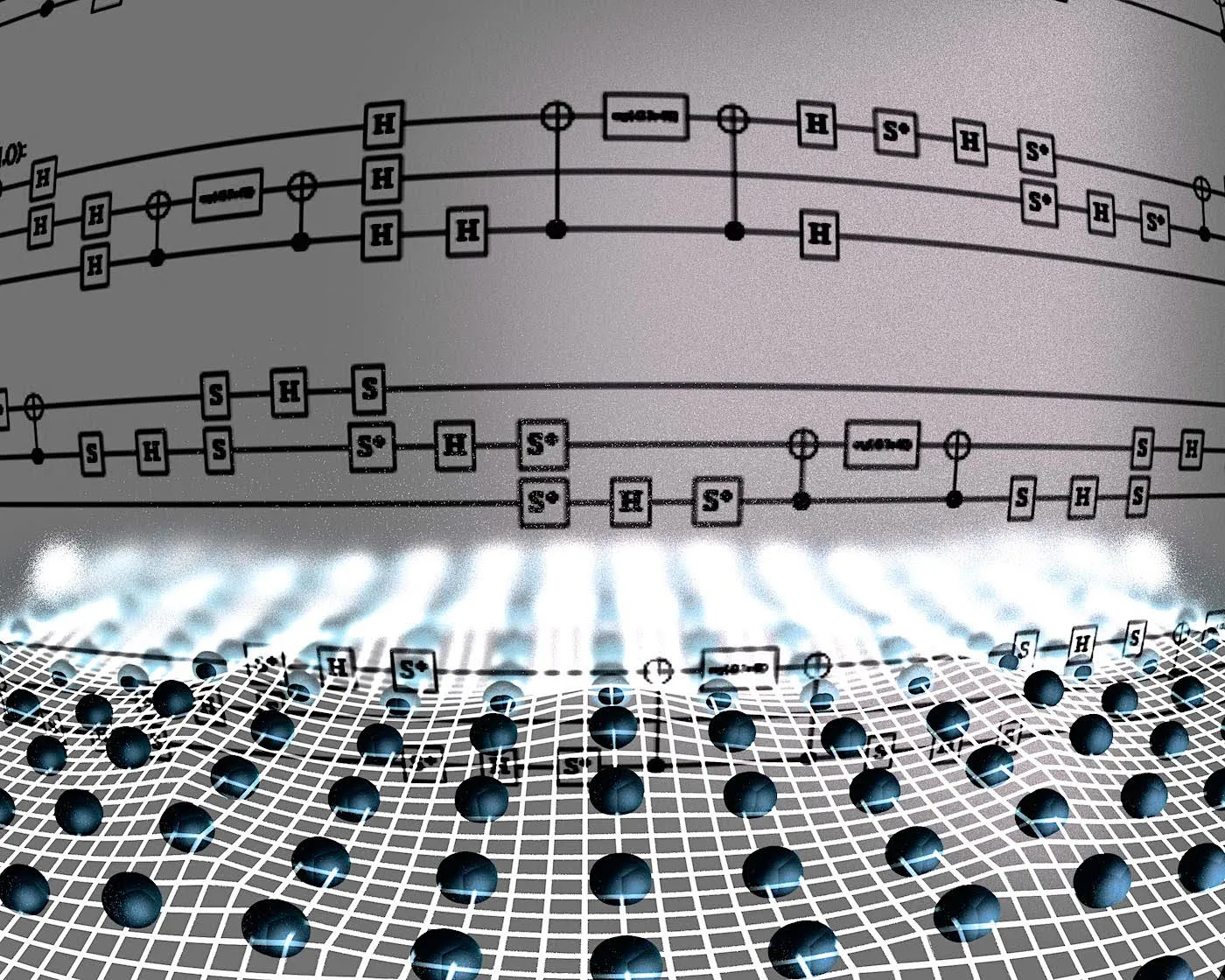
Four Fellows of the Joint Center for Quantum Information and Computer Science (QuICS) have joined a national effort to develop quantum technologies that will usher in a new era of scientific discovery and innovation.
Andrew Childs, a professor of computer science and the co-director of QuICS, and Xiaodi Wu, an assistant professor of computer science, will collaborate with scientists from federal labs, private industry and other universities as part of the new Quantum Science Center (QSC) that was announced on August 26.
Chris Monroe, a Distinguished University Professor and the Bice Seci-Zorn Professor of Physics, and Alexey Gorshkov, an adjunct associate professor of physics, are part of the Quantum Systems Accelerator (QSA), another multi-institutional quantum center announced this week.
Each center is funded by a $115 million award from the Department of Energy (DOE). Both were established in support the National Quantum Initiative Act of 2018, which is a roadmap for enhancing America’s national security and retaining its global leadership in scientific research and development—goals that require broad expertise and capabilities.
“We pulled together a fantastic team from four national laboratories, three industry partners and nine universities to overcome key roadblocks in quantum state resilience, controllability and ultimately scalability of quantum technologies,” said QSC Director David Dean, a physicist at the Oak Ridge National Laboratory, where the new center is headquartered. “We are prepared to catalyze quantum materials, computing and devices research to significantly impact the national quantum ecosystem.”
In addition to the University of Maryland and the Oak Ridge lab, partner organizations in the QSC include: California Institute of Technology, ColdQuanta, Fermilab, Harvard University, IBM, Los Alamos National Laboratory, Microsoft, Pacific Northwest National Laboratory, Princeton University, Purdue University, University of California, Berkeley, University of California, Santa Barbara, University of Tennessee, Knoxville, and University of Washington.
The QSC’s research goals are organized around three scientific focus areas: quantum materials discovery and design, quantum algorithms and simulations, and quantum devices and sensors for discovery science.
Childs and Wu are part of the algorithms and simulations thrust. Childs will be active in developing algorithms that provide better approaches for Hamiltonian simulation, which is used to efficiently characterize the evolution of a quantum state. Wu will collaborate with Childs and others on that same task, and will also work on automating Hamiltonian simulations in another project starting in the second year of the QSC’s activities.
The QSA center where Monroe and Gorshkov are active is led by Lawrence Berkeley National Laboratory. It brings together dozens of scientists who are pioneers of many of today’s quantum capabilities.
In addition to Maryland and the Berkeley lab, QSA partners include: Sandia National Laboratories, University of Colorado at Boulder, MIT Lincoln Laboratory, Caltech, Harvard University, Duke University, Massachusetts Institute of Technology, Tufts University, UC Berkeley, University of New Mexico, University of Southern California, UT Austin, and Canada’s Université de Sherbrooke.
The QSA aims to co-design the algorithms, quantum devices and engineering solutions needed to deliver certified quantum advantage in scientific applications. Its multidisciplinary teams will pair advanced quantum prototypes—based on neutral atoms, trapped ions and superconducting circuits—with algorithms specifically constructed for imperfect hardware to demonstrate optimal applications for each platform in scientific computing, materials science and fundamental physics.
Joining Monroe and Gorshkov in the QSA are Norbert Linke, an assistant professor of physics, and Mohammad Hafezi, an associate professor of physics and of electrical and computer engineering. Monroe, Gorshkov, Linke and Hafezi all have appointments in Maryland’s Joint Quantum Institute, and will collaborate closely with researchers at Duke in a quest to build and use ion-trap based quantum computers.
“The quantum processors developed by the QSA will explore the mysterious properties of complex quantum systems in ways never before possible, opening unprecedented opportunities for scientific discovery while also posing new challenges,” said John Preskill, the Richard P. Feynman Professor of Theoretical Physics at Caltech and the QSA scientific coordinator.
###
QuICS is a partnership between the University of Maryland and the National Institute of Standards and Technology. It receives technical and administrative support from the University of Maryland Institute for Advanced Computer Studies.